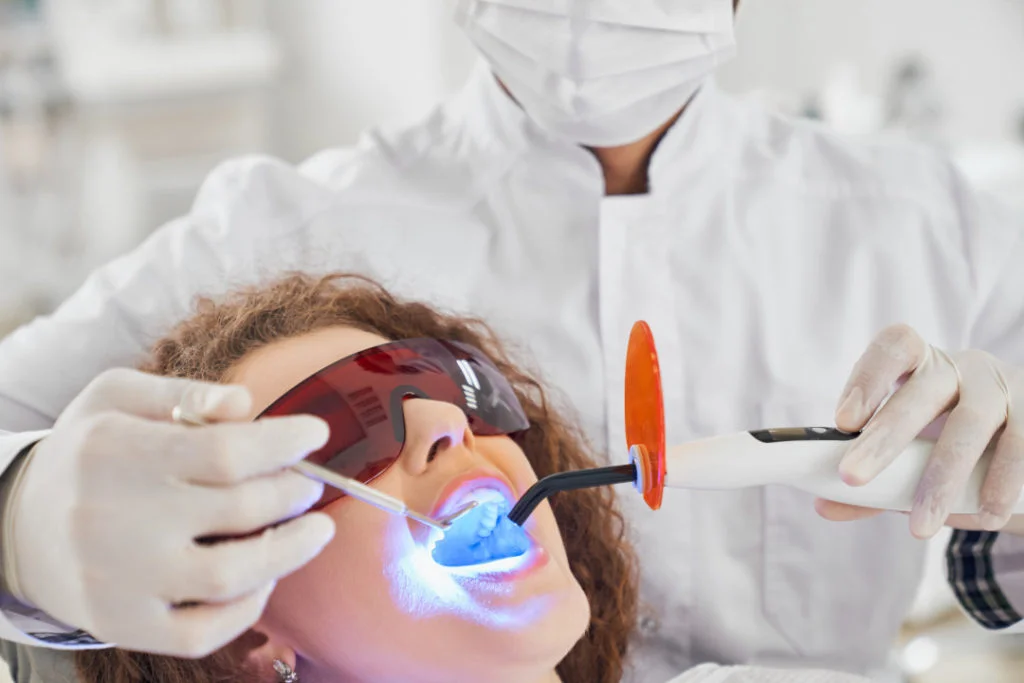A bright smile is often associated with confidence, youth, and good health. Over time, however, teeth can lose their natural sparkle due to daily habits, aging, and exposure to staining substances. This has led many people to seek professional teeth whitening treatments to restore a radiant appearance and improve their overall smile aesthetics. Modern whitening options offer safe, effective, and noticeable results when performed under the guidance of a dental professional.
How Teeth Become Stained
Teeth naturally have a slightly off-white color due to the underlying dentin layer, but certain factors can cause discoloration to become more pronounced. These include:
- Diet and Beverages: Coffee, tea, red wine, and dark-colored foods contain pigments that can penetrate enamel over time.
- Smoking and Tobacco Use: Nicotine and tar can leave deep yellow or brown stains.
- Aging: As enamel wears down, the yellowish dentin underneath becomes more visible.
- Poor Oral Hygiene: Plaque and tartar buildup can contribute to a dull, stained appearance.
- Medications: Certain antibiotics and medical treatments can alter tooth color.
Because many stains become embedded in the microscopic pores of tooth enamel, they are resistant to surface cleaning and require specialized whitening treatments to address effectively.
Professional Whitening vs. Over-the-Counter Products
Over-the-counter whitening kits and toothpastes may help with mild surface stains, but they often lack the strength and precision of professional treatments. Dentists use higher-concentration whitening agents that can penetrate enamel and break down stain molecules more effectively, delivering results that are both brighter and longer-lasting. Additionally, professional whitening is customized to the individual, ensuring even results without damaging surrounding tissues.
The Process of Dental Bleaching
Professional dental bleaching typically involves the use of a peroxide-based gel applied directly to the teeth. This gel works by releasing oxygen molecules that break down the chemical bonds of stain compounds, effectively lightening tooth color. Depending on the method chosen—either in-office or take-home trays provided by the dentist—patients can see results in as little as one visit or over a few weeks of at-home use.
In-office treatments often use specialized lights or lasers to enhance the whitening process, achieving faster and more dramatic results. Take-home trays, custom-fitted to the patient’s teeth, allow for gradual whitening in the comfort of home while still benefiting from the safety and guidance of professional oversight.
Many individuals seek whitening treatments to remove stubborn stains through dental bleaching when regular brushing or store-bought products have little effect. This approach can restore teeth several shades lighter, improving both appearance and confidence.
Safety and Sensitivity Considerations
While whitening is generally safe under professional supervision, some patients may experience temporary tooth sensitivity or gum irritation. This is often due to the active ingredients penetrating the enamel to reach the stains. Dentists can mitigate discomfort by adjusting treatment times, using desensitizing agents, or recommending certain toothpastes before and after the procedure.
It is also important to ensure that whitening is not performed on teeth with untreated decay, gum disease, or worn enamel, as these conditions can cause discomfort and affect results. A dental check-up prior to whitening ensures the best outcome.
Maintaining Whitening Results
The longevity of whitening results depends largely on lifestyle and oral care habits. To preserve brightness, patients should:
- Limit consumption of staining foods and drinks
- Avoid tobacco products
- Practice excellent oral hygiene, including twice-daily brushing and daily flossing
- Schedule regular dental cleanings to remove surface buildup
- Consider occasional touch-up treatments as recommended by the dentist
Using a straw for dark beverages, rinsing the mouth after meals, and maintaining a balanced diet rich in crunchy fruits and vegetables can also help reduce staining between treatments.
Who Should Consider Teeth Whitening?
Whitening is most effective for people with healthy teeth and gums, and it works best on stains caused by external factors like food and beverages. It is less effective on discoloration from internal tooth damage, enamel erosion, or certain medications. Patients with dental restorations such as crowns, veneers, or fillings should be aware that these materials will not lighten with bleaching, potentially requiring replacement to match the new tooth shade.
Whitening is generally not recommended for children under 16, pregnant or breastfeeding women, or individuals with severe enamel wear unless advised by a dental professional.
The Role of Regular Dental Visits
Teeth whitening should be viewed as part of a broader oral health routine, not a substitute for it. Regular check-ups and cleanings ensure that teeth remain healthy, and they allow dentists to monitor the effectiveness of whitening over time. Combining cosmetic improvements with preventive care helps maintain a healthy, attractive smile for years to come.
For those curious about the causes of tooth discoloration and the best ways to prevent them, understanding these factors is key to protecting the results of professional whitening treatments and maintaining long-term dental health.
